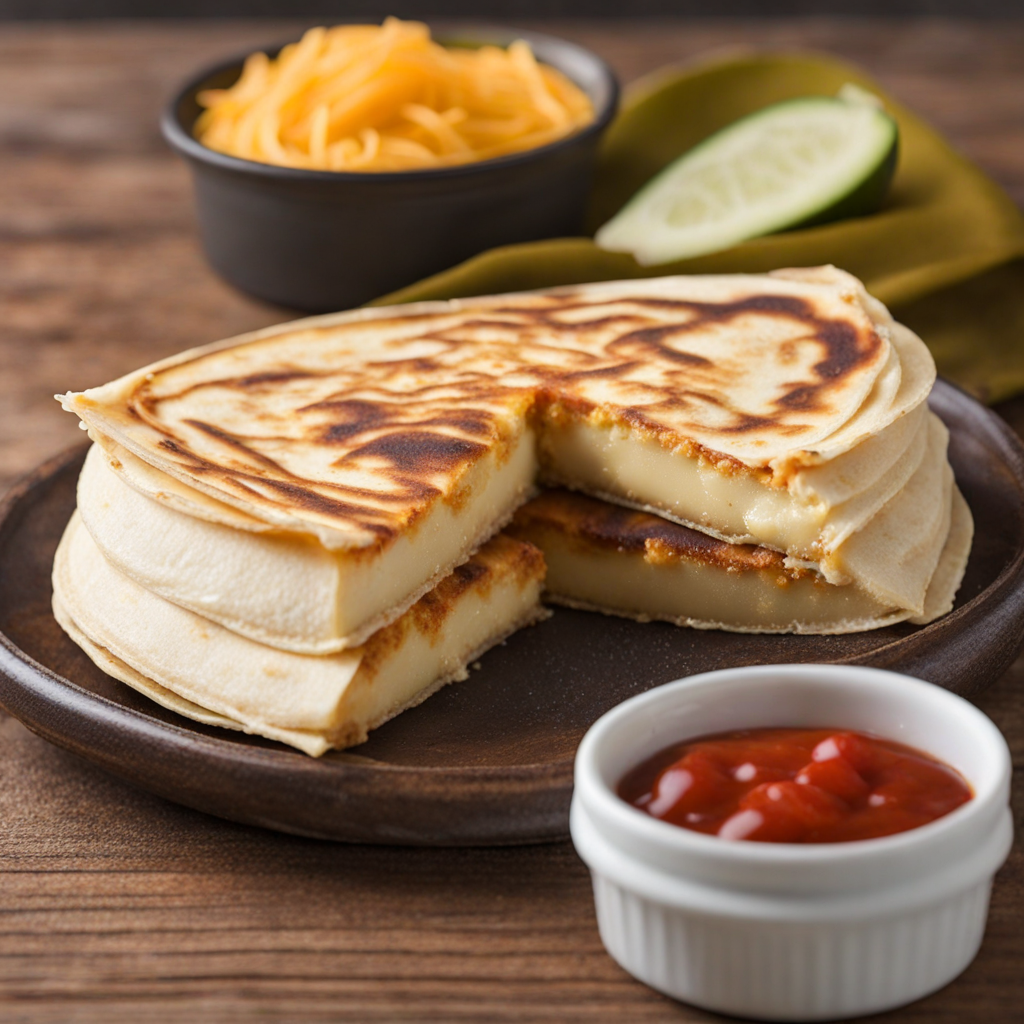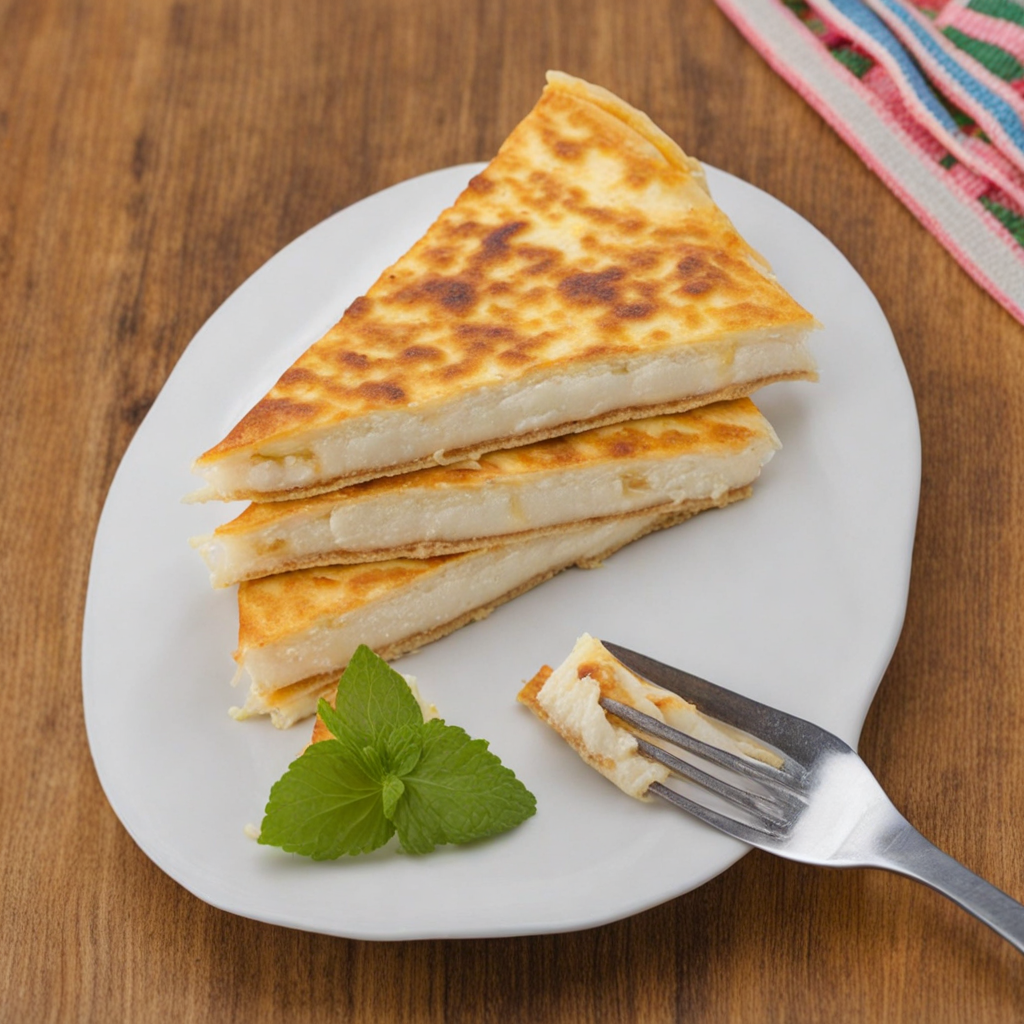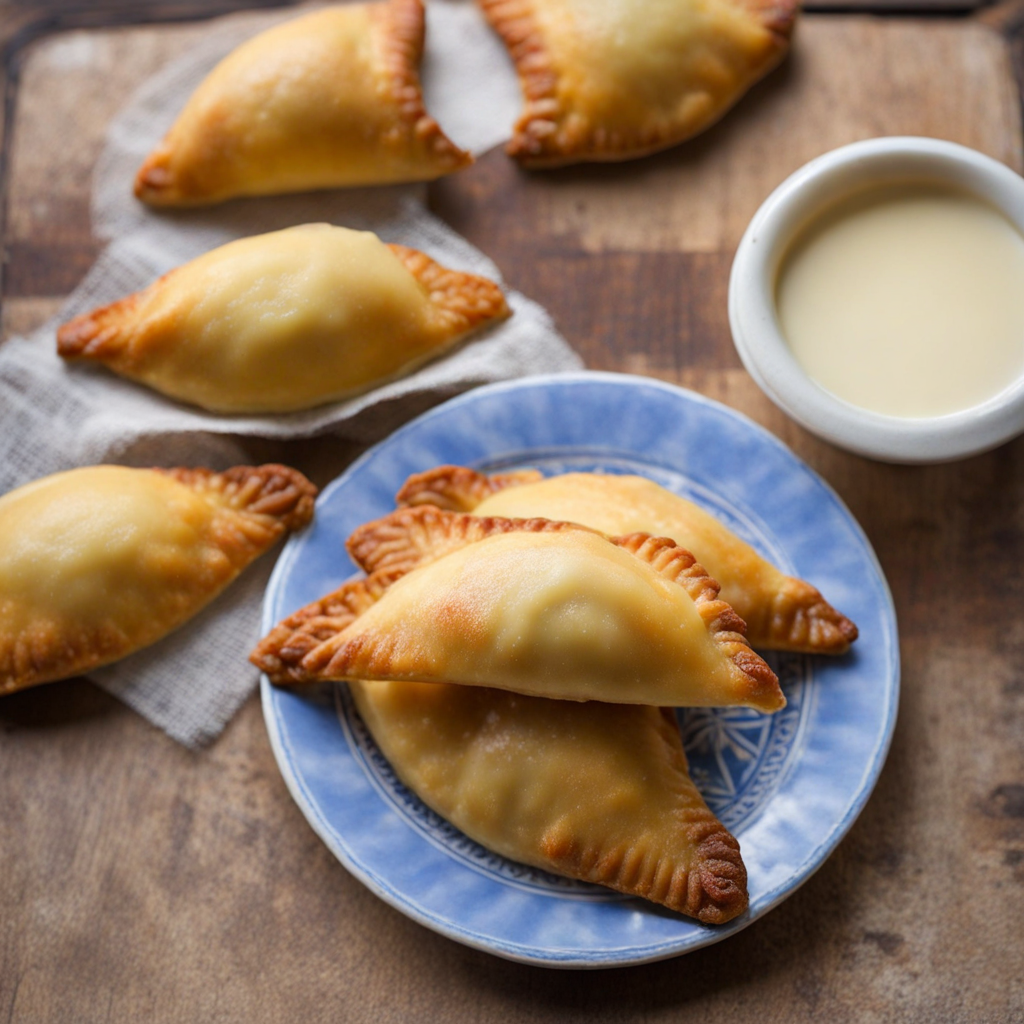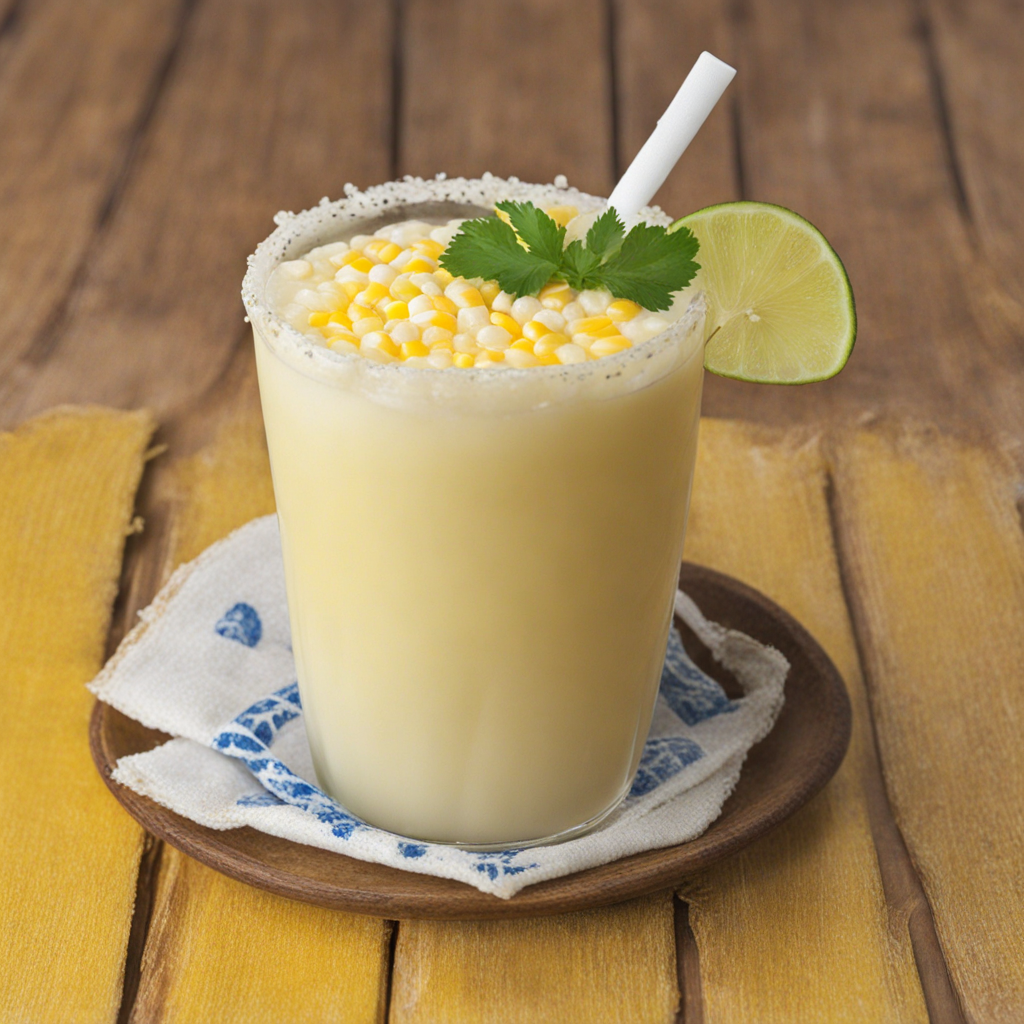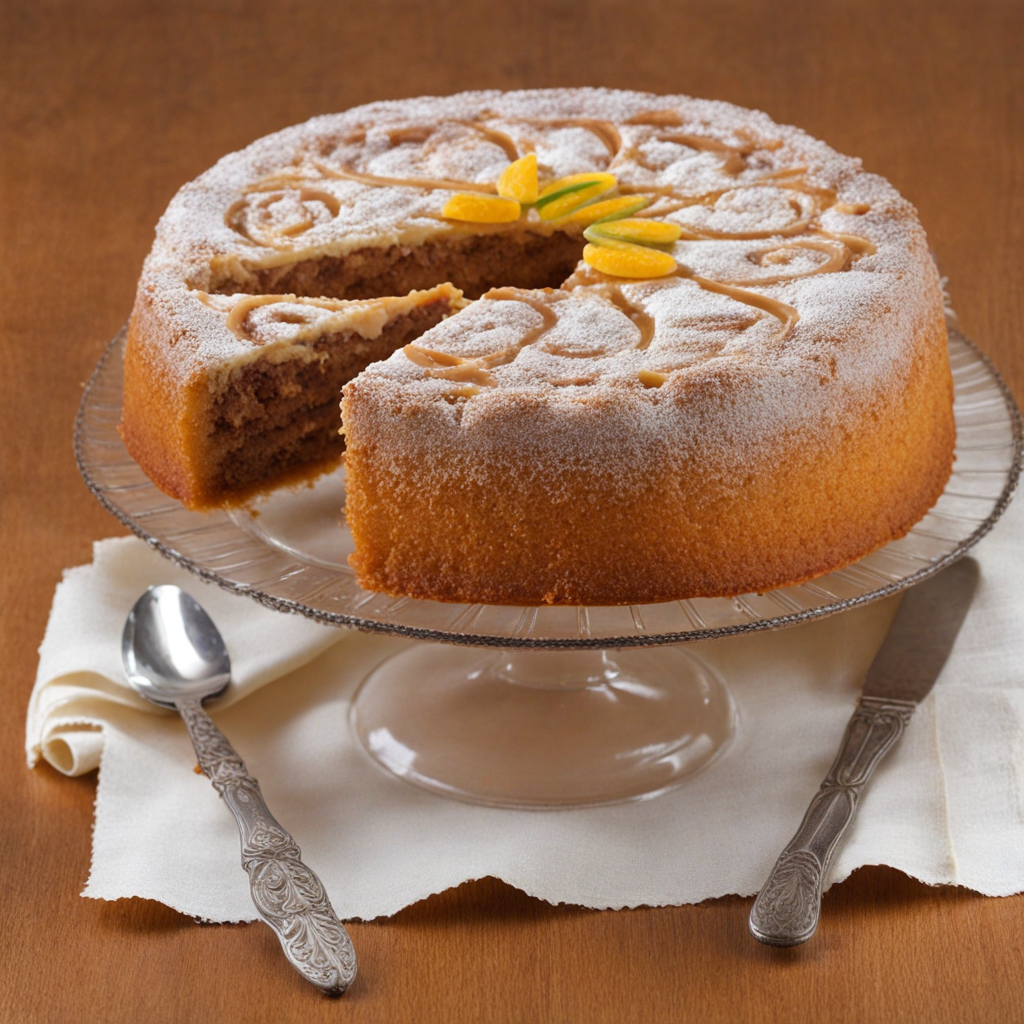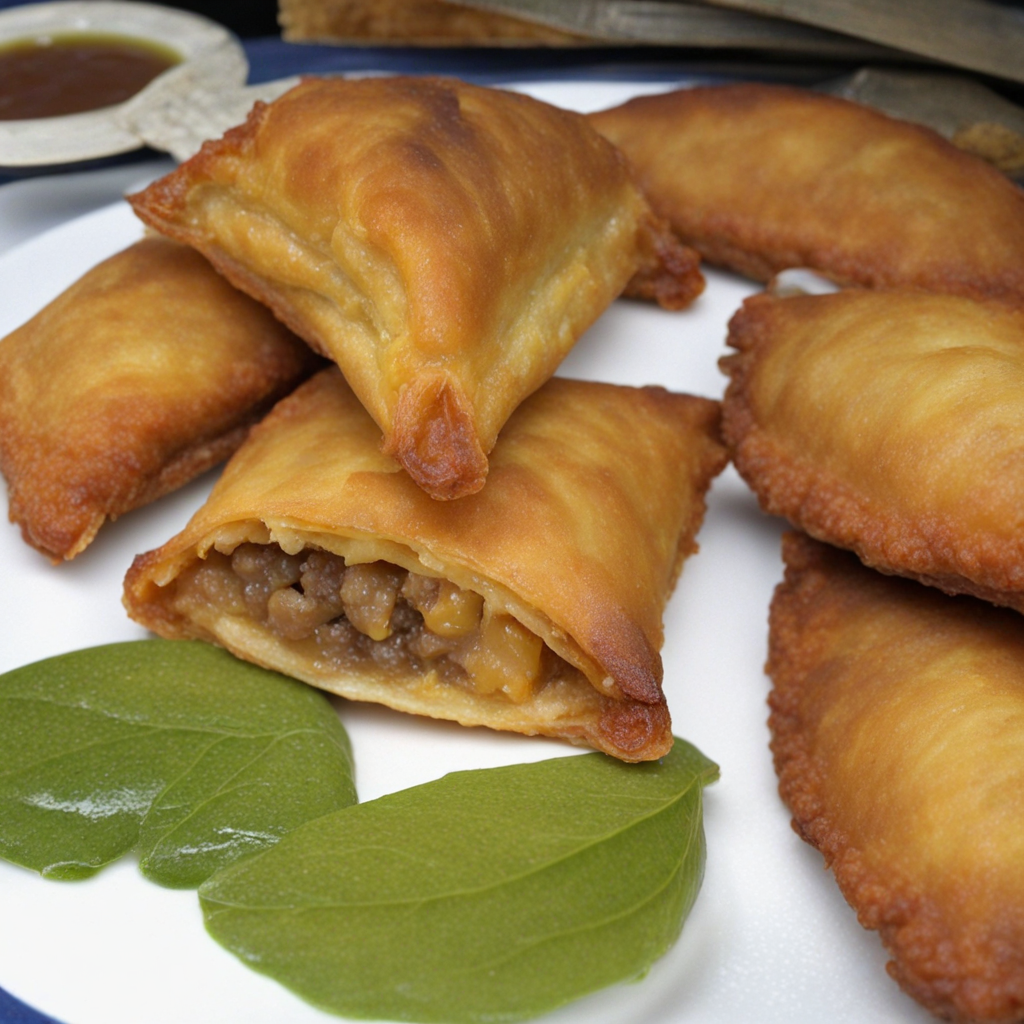Quesadilla Salvadoreña
Quesadilla Salvadoreña is a delightful culinary gem from El Salvador, distinctly different from the traditional Mexican quesadilla. This savory treat is a baked cheese-filled pastry made primarily from a unique blend of rice flour, giving it a soft and slightly chewy texture. The dough is enriched with a touch of butter, sugar, and sometimes a hint of baking powder, which contributes to its slight sweetness and lightness. What sets it apart is the use of creamy, fresh cheese, often a local variety such as Quesillo, which melts beautifully and adds a rich, savory component to each bite. The flavor profile of Quesadilla Salvadoreña is a harmonious balance of sweetness from the sugar and the savory, salty notes from the cheese, making it a versatile dish. It's often enjoyed as a breakfast item or an afternoon snack, and it pairs wonderfully with a cup of coffee or a sweet beverage. Some variations may include a sprinkle of sesame seeds on top, offering a delightful crunch and additional flavor. The golden-brown crust achieves a beautiful color when baked, inviting you to indulge in its comforting aroma. Eating Quesadilla Salvadoreña is an experience that transports you to the heart of Salvadoran culture. Often shared among family and friends during gatherings, this dish embodies warmth and hospitality. Whether you find it at a local eatery or decide to try your hand at making it at home, the experience of savoring this cheesy, sweet pastry is sure to leave a lasting impression on your palate, inviting you to explore more of the rich culinary heritage of El Salvador.
How It Became This Dish
Quesadilla Salvadoreña: A Culinary Journey through El Salvador #### Origins The Quesadilla Salvadoreña is a beloved culinary gem from El Salvador, known for its distinct flavor and texture. Contrary to what the name might suggest, this dish is not a traditional quesadilla, which typically comprises two tortillas stuffed with cheese and folded. Instead, the Quesadilla Salvadoreña is a sweet and savory cake-like treat made primarily from a base of corn flour, cheese, and a hint of sugar, often enjoyed as a dessert or a snack. The origins of the Quesadilla Salvadoreña can be traced back to the indigenous peoples of Mesoamerica, where maize has been a staple food for thousands of years. The word "quesadilla" itself derives from "queso," meaning cheese in Spanish, reflecting the Spanish influence after the conquest of the Americas. The melding of indigenous food traditions with European ingredients and techniques led to the creation of many unique dishes, including the Quesadilla Salvadoreña. The dish is believed to have developed in the 19th century, during a time when El Salvador was experiencing significant cultural and social changes. The introduction of wheat flour, which was easier to bake than corn masa, allowed for the creation of this unique “quesadilla.” The use of local soft cheeses, such as cuajada, gave the dish its distinctive creamy texture and rich flavor, making it a local favorite. #### Cultural Significance In El Salvador, food is more than just sustenance; it is a reflection of the country's cultural identity and history. The Quesadilla Salvadoreña holds a special place in Salvadoran cuisine, often served during celebrations, family gatherings, and religious holidays. It is common to find this dish at weddings, birthdays, and Christmas, where it is enjoyed alongside coffee or hot chocolate. The Quesadilla Salvadoreña is not simply a food item but a cultural symbol that embodies the warmth of Salvadoran hospitality. Sharing a slice of this delicious treat with friends and family reflects the importance of community in Salvadoran culture. It serves as a reminder of the country’s rich agricultural heritage, where maize and dairy farming have been vital to the livelihoods of many Salvadorans. Moreover, the dish is often associated with the concept of "pupusería," a local eatery that specializes in pupusas—thick corn tortillas filled with various ingredients. These establishments are vital social hubs in communities, where people gather not only to eat but also to connect and share stories. The presence of Quesadilla Salvadoreña on the menu of pupuserías reinforces its status as an integral part of Salvadoran culinary tradition. #### Development Over Time As El Salvador has evolved, so too has the Quesadilla Salvadoreña. Initially, the dish was made with simple ingredients, primarily corn flour, cheese, and sugar. However, over the years, variations have emerged that reflect the changing tastes and preferences of Salvadorans. Today, you may find recipes that incorporate additional flavors such as vanilla, cinnamon, and even coconut, which lend a unique twist to the traditional recipe. The globalization of food culture has also influenced the Quesadilla Salvadoreña. As Salvadorans migrated to other countries, particularly the United States, they brought their culinary traditions with them. In places with significant Salvadoran populations, such as Los Angeles and Washington D.C., the dish has gained popularity among a broader audience, leading to the establishment of Salvadoran restaurants that serve traditional dishes alongside modern interpretations. The growth of the culinary scene in El Salvador has also spurred innovation in how the Quesadilla Salvadoreña is prepared and presented. Chefs have begun to experiment with presentation styles, creating visually stunning desserts that combine traditional flavors with modern aesthetics. For instance, serving mini Quesadilla Salvadoreñas as bite-sized pastries or pairing them with artisanal ice cream has become a trendy way to enjoy this classic treat. In recent years, there has been a growing movement towards sustainability and using locally sourced ingredients in Salvadoran cuisine. Many chefs and home cooks are now opting for organic corn and artisanal cheeses, which not only enhance the flavor of the Quesadilla Salvadoreña but also support local farmers and promote environmental stewardship. #### Conclusion The Quesadilla Salvadoreña is more than just a delicious treat; it is a testament to El Salvador's rich cultural heritage and culinary evolution. From its indigenous roots to its contemporary adaptations, this dish embodies the spirit of Salvadoran identity, bringing people together and celebrating community. As El Salvador continues to grow and change, the Quesadilla Salvadoreña remains a cherished staple, a delicious reminder of the country's history, traditions, and resilience. As food enthusiasts explore the flavors of El Salvador, the Quesadilla Salvadoreña stands out as a must-try delicacy, inviting all to experience the warmth of Salvadoran culture through its delightful taste. Whether enjoyed in a bustling pupusería or at a family gathering, this sweet and savory treat promises to delight the senses and create lasting memories.
You may like
Discover local flavors from El Salvador


